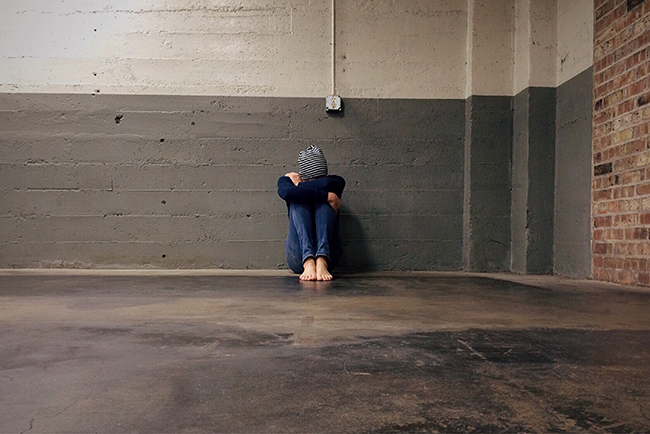
There are a few things every church can do to help push back the darkness of human trafficking in their communities and even in their pews.
Editor’s note: January is National Human Trafficking Prevention Month.
By C.C. Allen
The subject of human trafficking took the media by storm last summer with the release of the movie Sound of Freedom. Though Hollywood movies don’t necessarily present the reality of trafficking, the problem still exists with staggering statistics. In particular, sex trafficking wreaks havoc among America’s vulnerable adults and youth alike.
The National Human Trafficking Hotline defines sex trafficking as “a form of modern-day slavery in which individuals perform commercial sex through the use of force, fraud, or coercion.” According to Anti-Trafficking International (ATI), human trafficking is the second largest criminal enterprise in the world, and more than 100,000 children are exploited each year in the U.S.
The International Justice Mission reports that human trafficking generates approximately $150 billion a year, with two-thirds of that amount generated by sex trafficking alone.
Human trafficking is the second largest criminal enterprise in the world, and more than 100,000 children are exploited each year in the U.S., according to Anti-Trafficking International. Click To Tweet“With cases reported in all 50 states in the U.S., slavery happens across the street from where we live, work, and worship,” said Raleigh Sadler, founder and executive director of Let My People Go, a network designed to empower the local church to fight human trafficking by loving those most vulnerable. “Those vulnerable to human trafficking include the man being forced to work against his will in a brick mill in India as well as the 17-year-old girl in the back pew of church being trafficked for sex by her boyfriend.”
Who are the traffickers?
Polaris, the nonprofit that operates the U.S. National Human Trafficking Hotline, reports that “contrary to popular misconceptions, sex trafficking rarely begins with kidnapping by a stranger. Instead, sex traffickers groom their victims by using love—romantic love, friendship, and familial love—to manipulate them into cooperating in their own exploitation.” According to ATI, traffickers come from all parts of society but often fall into one of these five categories:
1. A boyfriend or girlfriend (often in their late teens or early twenties) may pretend to be the romantic interest of the victim.
2. Criminal gangs sometimes use an associate with a less threatening appearance to lure victims into their circle. Gang members can and will dress conservatively and appear studious or professional to lure victims.
3. “Sugaring” most often affects college-aged students pampered by older adults with things like expensive presents, cash, outings, or vacations for what seems like companionship. But ultimately, sexual favors are demanded by the “sugar daddy” or “sugar momma.”
4. Fake employers use modeling or other glamorous career offerings to lure victims into trafficking.
5. Family members and close friends, including siblings, parents, aunts or uncles, foster parents, coaches, or other community members close to the family, may also prey on victims. Unfortunately, this is the fastest-growing demographic. In 2020, Polaris reported the proportion of trafficking victims recruited by a family member or caregiver increased significantly from 21% in 2019 to 31% in 2020—a 47% increase. Polaris reported another increase in 2021, indicating 1 in 3 (33%) reported recruiters are family members or caregivers of the victim.
“Contrary to popular misconceptions, sex trafficking rarely begins with kidnapping by a stranger. Instead, sex traffickers groom their victims by using love to manipulate them into cooperating in their own exploitation.” Click To TweetWho are the victims?
According to ATI, the average age of victims is 12-15 years old but can be as young as three months old. They come from every race, age, ethnicity, social or economic group, and gender.
According to the Poiema Foundation, an organization that rescues trafficked girls and women, traffickers look for vulnerable people. “Pimps keep their victims under control through force, coercion, violence, rape, and in some cases, threats to harm the victim’s family. The trauma caused by traffickers, (called a trauma-bond) can be so strong that many do not identify themselves as a victim of human trafficking,” the organization explains. “The control a pimp has over the victim and the victim’s fear of retribution typically cause the victim to feel powerless and trapped, resulting in a reluctance to ask for help, even when in public. In many cases, human trafficking is a hidden crime.”
There are some common traits among vulnerable victims. Victims often:
- Base their self-worth on relationships or popularity
- Look for a significant other
- Are willing to keep secrets, including the trafficked relationship
- Are willing to take directions and believe the trafficker’s lies and false promises
- Lack a sense of belonging among their peers or family
- Don’t feel respected or valued by family and friends
- Live in unstable family situations due to divorce, separation, or death of a parent
- Come from orphanages or group and foster homes
- Are runaways or homeless
- Are involved in the juvenile justice system
- Are often bored
What can the church do?
Amanda Eckhardt, chief program officer at Urban Resource Institute, reports that many traffickers allow their victims to attend church. Some trafficking victims attend faith communities regularly. These victims testify that the local church is one of the few places where they can be away from their exploiters for short periods of time.
There are a few things every church can do to help push back the darkness of human trafficking in their communities and even in their pews.
1. Observe Christ’s example
Our Savior ministered to the broken, “throw-away” people society rejected. He lived and died for sinners who had nothing to offer. When we realize our position in Christ, we seek the lost lambs of the trafficking industry. Jesus said, “Truly I tell you, whatever you did for one of the least of these brothers and sisters of mine, you did for me” (Matthew 25:40b, CSB).
2. Start at home
Home includes our nuclear and church families. Learn the ways predators seek victims and monitor children’s public outings as well as their use of computers, phones, and social media.
3. Pray
Pray for victims to be found and taken to safe houses. Also, pray for leaders of rescue organizations and pro-life organizations. And pray for our government to acknowledge heinous sex crimes and act accordingly.
4. Educate
Inform congregants about America’s sex slave industry. Provide training and continuing education through the Caring Well Challenge or education programs from organizations like ATI, Poiema Foundation, and Let My People Go.
5. Watch for the red flags
ATI and Poiema warn about the following red flags:
- Changes in behavior, mood, or dress style
- Signs of physical abuse—unusually sleepy, loss of skin color, weight gain or loss
- Decrease in school, sports, or work motivation but increase in secrecy; frequent or unexplained absences and inconsistent stories
- Unexplained material possessions or atypical focus on money
- Increased sexual promiscuity or inappropriate conversations about sex
- Changes in peer group affiliation; indicators of gang affiliation (tattoos with unexplained meanings like dollar signs, bar codes, or “daddy”)
- Older, dominating boyfriend or girlfriend
- Signs of alcohol and drug addiction
6. Respond
Encourage church members to volunteer and donate to support rescue agencies. Add the National Human Trafficking Hotline number to your contact list and encourage others to do the same: 1-888-373-7888.
For permission to republish this article, contact Marissa Postell Sullivan.

C.C. Allen
C.C. is a freelance writer in Orange, Virginia and is pursuing her Master of Biblical and Theological Studies at Dallas Theological Seminary. She holds Master of Music and Doctor of Musical Arts degrees in vocal performance, combining her love for teaching and singing to convey the gospel of Christ.












